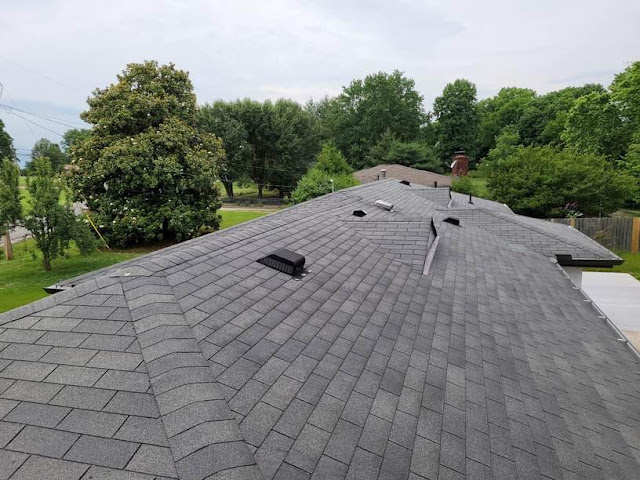To put it another way, the roof must have a pitch or slope of at least 2:12, which is the minimum requirement for an asphalt shingle roof to not sacrifice its precision roofing houston.
The installation of asphalt shingles is effortless, and they may provide your home with an elegant and sophisticated appearance. This makes them a good option for you to consider.
It is versatile enough to conform to any roof you decide to go with for your home. It has a wide range of applications, requires nothing in the way of upkeep, and may help you save a significant amount of money.
>> Related Post: Style Of Asphalt Shingles and how to choose.
It can withstand severe weather and climatic conditions, and it is one of the most widely used options available in any region of the globe.
It has the potential to give the property an attractive appearance and increase its worth significantly. It is pretty versatile since it can be put in any form and take on any hue, and it is also effortless to install.
Because of this, the roof must have a pitch of at least 2:12 for you to use this fabulous material for your cozy house.
Therefore, is a pitch of 2:12 considered the minimum acceptable for a roof covered with asphalt shingles? It is critical for each and every one of us to have an understanding of the minimal roof pitch required for an asphalt shingle roof.
For instance, if the slope of the roof is relatively shallow, the water that accumulates there, whether from melted snow or precipitation, would drain away very slowly.
>> Related Post: Guide to Requesting Customer Feedback for Swadley Roof Systems.
The likelihood of a possible lateral water hazard will increase due to this action and will sacrifice precision roofing houston.
In general, every roofing manufacturer would suggest that the optimal roof pitch should fall somewhere in the range of the ratio of 2:12 to 4:12, making this the minimum roof pitch required for installing asphalt shingles.
Therefore, this is why a roof pitch of 2:12 must be the minimum requirement for asphalt shingles.
Asphalt shingles are an American invention by Henry Reynolds of Grand Rapids, Michigan. They were first used in 1903, in general use in parts of America by 1911 and by 1939 11 million squares of shingles were being produced.
A U.S. National Board of Fire Underwriters campaign to eliminate the use of wood shingles on roofs was a contributing factor in the growth in popularity of asphalt shingles during the 1920s.
>> Related Post: How to Show Appreciation to Your Clients and Business Associates?
The forerunner of these shingles was first developed in 1893 and called asphalt prepared roofing which was similar to asphalt roll roofing without the surface granules.
In 1897 slate granules were added to the surface to make the material more durable. Types of granules tested have included mica, oyster shells, slate, dolomite, fly-ash, silica and clay. In 1901 this material was first cut into strips for use as one-tab and multi-tab shingles.
All shingles were organic at first with the base material, called felt, being primarily cotton rag until the 1920s when cotton rag became more expensive and alternative materials were used.
Other organic materials used as the felt included wool, jute or manila, and wood pulp. In 1926 the Asphalt Shingle and Research Institute with the National Bureau of Standards tested 22 types of experimental felts and found no significant differences in performance.
In the 1950s self-sealing and manually applied adhesives began to be used to help prevent wind damage to shingle roofs. The design standard was for the self-sealing strips of adhesive to be fully adhered after sixteen hours at 140 °F (60 °C).
>> Related Post: Significance New Technology Has For Your Roofing Company.
Also in the 1950s testing on the use of 3⁄4-inch (19 mm) staples rather than roofing nails was carried out showing they could perform as well as nails but with six staples compared with four nails.
In 1960 fiberglass mat bases were introduced with limited success; the lighter, more flexible fiberglass shingles proved to be more susceptible to wind damage particularly at freezing temperatures.
Later generations of shingles constructed using fiberglass in place of asbestos provided acceptable durability and fireproofing.
Also in the 1960s research into hail damage which was found to occur when hail reach a size larger than 1.5 inches (38 mm).
Asphalt Roofing Manufacturers Association (ARMA) formed the High Wind Task Force in 1990 to continue research to improve shingle wind resistance.
In 1996, a partnership between members of the U.S. property insurance industry, the Institute of Business and Home Safety, and the Underwriter's Laboratory (UL) was established to create an impact resistance classification system for roofing materials.
>> Related Post: Gzone6, KDHay, Logarid, Camtruyen.
The system, known as UL 2218, established a national standard for impact resistance. Subsequently, insurers offered discounted premiums for policies on structures using shingles that carried the highest impact classification (class 4).
In 1998, Texas Insurance Commissioner Elton Bomer mandated that Texas provide premium discounts to policyholders that installed class 4 roofs
Conclusion
Swadley Roof Systems offers the best roofing services in the Houston, Austin, San Antonio and Dallas area.
- Tel: 832-559-8463
- Email: info@swadleyroofsystems.com
- Location: 17413 FM 2920 Suite O Tomball, TX 77377
- Facebook: Fanpage Swadley Roof Systems
- Website: https://www.swadleyroofsystems.com/







0 Comments
Đăng nhận xét